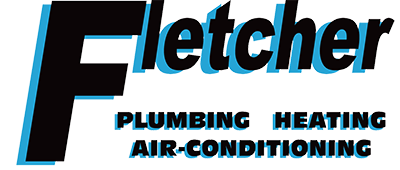
Ceiling fans are one of the most underrated ways to increase home comfort and lower energy costs. By improving air circulation and supporting your HVAC system, ceiling fans and energy efficiency are truly a natural pairing. They offer a practical, energy-efficient way to keep cool while easing strain on your AC—potentially sparing you from unnecessary air conditioning repair.
In this blog, the experts at Fletcher Plumbing, Heating & AC explain how ceiling fans can improve your comfort while saving you money thanks to increased HVAC efficiency. We'll also offer some HVAC efficiency tips that make the most of ceiling fans.
Comfort vs. Temperature: Getting Comfortable with the Wind-Chill Effect Indoors
Ceiling fans don’t actually cool the air—they cool you down by blowing air across your skin. This is referred to as the wind-chill effect, and it can make a room feel up to 4 degrees cooler without lowering the thermostat. That means you remain cool and enjoy the benefits of indoor air circulation from your ceiling fan while using less AC—helping reduce your electric bill in summer.
The Best of Both: Advantages of Pairing Fans and Air Conditioning Together
There are several benefits to using ceiling fans and air conditioning in tandem, especially when it's very hot outside. By using both, you maximize HVAC efficiency and maintain a comfortable indoor temperature with less effort from your cooling system.
Top perks of using ceiling fans and AC together:
- Ceiling fans help lower HVAC load by circulating cool air more evenly throughout a room. Limiting HVAC stress is important, because it can help you avoid a breakdown that may lead to premature AC or furnace installation.
- Using ceiling fans boosts the comfort level of your home by eliminating hot spots and increasing airflow.
- Pairing ceiling fans and AC can reduce overall energy use. If you have a home automation system, you can even fine-tune your smart thermostat settings to set the temperature higher while your ceiling fan is running.
Clockwise vs. Counterclockwise Ceiling Fan Rotation: Which is the Correct Direction?
To make full use of your ceiling fans year-round, it’s important to make sure the blades rotate in the proper direction for the season. The direction influences how air circulates, which can either make you feel cooler or redistribute heat so you feel warmer.
When to rotate ceiling fans counterclockwise
When it's hot outside, ceiling fans should spin counterclockwise at a faster setting. This creates a breeze that pushes cool air downward, increasing the wind-chill effect and creating a cooler sensation.
When to spin ceiling fans clockwise
On cold days, set your fan to turn clockwise on a gentle setting. This lifts cooler air and draws warm air downward from the ceiling, making the space feel cozier without changing your thermostat.
Things to Look for in a Ceiling Fan
Picking the right ceiling fan depends on a few critical considerations, including blade design, airflow rating and room dimensions. First, look for fans that have a good combination of ECFM airflow and blade pitch to ensure efficient air movement in your space:
- ECFM refers to the amount of air a fan moves—the cubic feet per minute, or CFM—per watt of electricity used. Fans with greater ECFM are the most energy efficient.
- Blade pitch refers to the angle of the blades. A steeper blade pitch moves more air but can also put extra load on the motor.
Also, consider room size when sizing a ceiling fan—a fan that’s too small won’t circulate sufficient air, while one that’s too large may be overpowering for the room.
Boost Your HVAC Efficiency With Help from Fletcher Plumbing, Heating & AC
At Fletcher Plumbing, Heating & AC, our HVAC experts can help you stay comfortable while easing the burden on your heating and cooling systems. From efficient ceiling fan strategies and air conditioning installation to smart thermostats and furnace repair, we offer comprehensive services that match your needs. Schedule your appointment by calling 302-653-0503 today.
